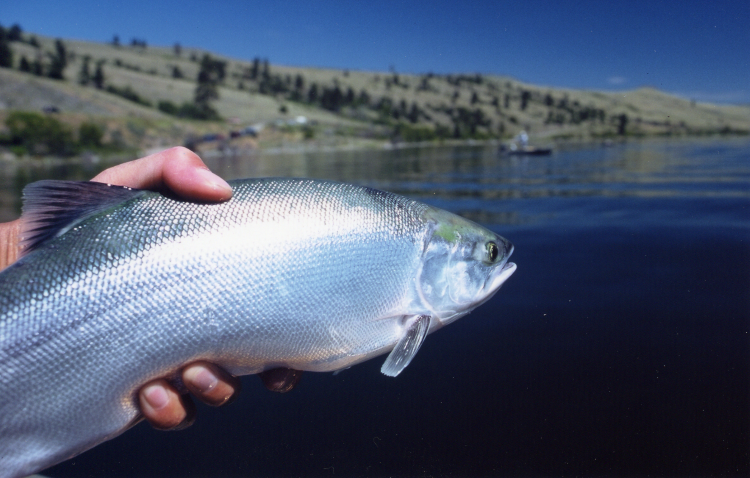Origin: Kokanee (Oncorhynchus nerka) are the freshwater form of sockeye salmon. To create recreational and commercial fisheries, kokanee have been introduced widely across North America. Here in B.C., eggs are traditionally harvested at the spawning channel in Meadow Creek, which is located at the north end of Kootenay Lake. Harvesting occurs only after enough kokanee are on the spawning grounds to provide sufficient natural reproduction. The Society also maintains other reproductive sources to meet the need for eggs when adult returns are low. These sources include Norbury Creek, Deka Lake, Sulphurous Lake, and Osilinka River.
Habitat: Although sockeye spend time at sea and return to freshwater to spawn, kokanee spend their entire lives in freshwater. While kokanee can be found in areas where there aren’t any sockeye, in some lakes, kokanee will actually spawn in the same streams as sockeye. Even where this occurs, kokanee maintain unique genetic characteristics. Kokanees’ food sources vary with season and location, and will include crustacean plankton, phytoplankton, insects, and other zooplankton. During the spring and fall when lakes are not layered (stratified), kokanee can be found at various depths. In the summer, they will often occupy the middle layers of open water. However, with more extreme temperatures in summer (or winter), they will typically move to deeper water. When the lake is stratified, adults and juveniles will often move to the upper or middle, food-rich layers at dusk and dawn. In some systems, once juveniles reach a bigger size, they may forage inshore during the day.
Description: Kokanee are bright silver with steel-blue to green-blue backs, and a deeply forked caudal fin. Kokanee have no distinct black spots or markings, although there are sometimes dark marks on the dorsal fin. Older fry and juveniles have small oval parr marks. Mature males develop a turned-up (hooked) snout, gaping mouth and small hump in front of the dorsal fin. Maturing males and females turn bright red to dirty red-grey on the sides and back, with bright green to olive-black heads. These colour changes are less pronounced in females, which are usually a darker, red-grey colour.
Fishing: Kokanee are a popular sport fish because of their schooling behaviour, willingness to strike, and excellent eating qualities. They are also good fish to target in summer and winter when water temperatures make fishing for rainbow trout more difficult.
